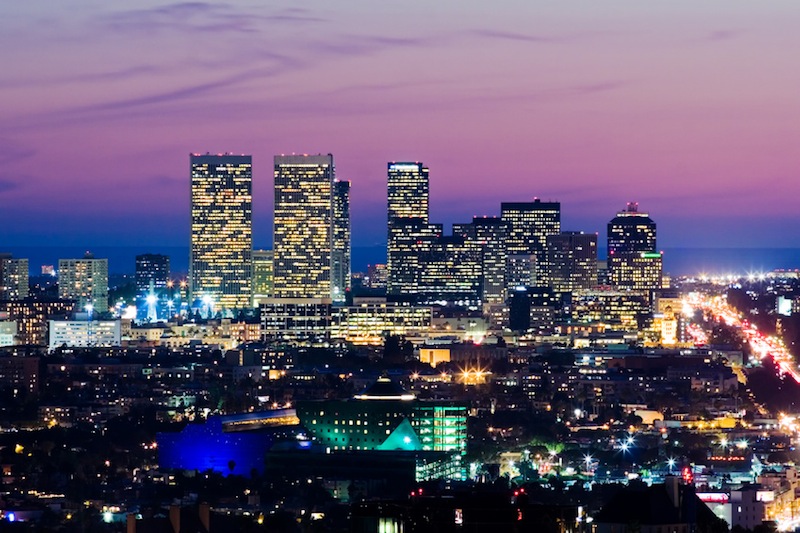With 528 buildings totaling 112.5 million sf, Los Angeles topped the EPA's ranking of the U.S. metropolitan areas with the most Energy Star certified buildings in 2012. Rounding out the top five are Washington, D.C. (462 buildings); Chicago (353); New York (325); and Atlanta (304).
In 2012, more than 20,000 Energy Star certified buildings across America helped save more than $2.7 billion in annual utility bills. The cumulative number of Energy Star certified buildings has increased by more than 24 percent compared to last year, representing more than 3 billion square feet of floorspace nationwide. In 2012 alone, more than 8,200 buildings earned EPA’s Energy Star certification.
Phoenix broke into the top 10 for the first time, with 202 buildings. Boston, a newcomer to the list last year, held on to 10th place, with 11th place Philadelphia not far behind. Seventh-place Houston, with 241 buildings, is home to one in particular that stands out: Phoenix Tower, a 34-story office building, has earned EPA’s Energy Star 14 times—more than any other building in America.
Here are the top 25:
1. Los Angeles - 528 buildings
2. Washington, D.C. - 462
3. Chicago - 353
4. New York - 325
5. Atlanta - 304
6. San Francisco - 291
7. Houston - 241
8. Dallas-Fort Worth - 214
9. Phoenix - 202
10. Boston - 188
11. Philadelphia - 174
12. Denver - 161
13. Cincinnati - 137
14. Charlotte - 133
14. Minneapolis-St.Paul - 133
15. San Diego - 123
16. San Jose - 114
17. Seattle - 108
18. Miami - 104
19. Detroit - 100
20. Sacramento - 97
21. Indianapolis - 91
22. Albuquerque, N.M. - 89
23. Kansas City, Mo. - 82
23. Portland, Ore. - 82
24. Riverside, Calif. - 69
25. Virginia Beach, Va. - 67
Download a PDF of the full list.
Related Stories
| Sep 21, 2010
New BOMA-Kingsley Report Shows Compression in Utilities and Total Operating Expenses
A new report from the Building Owners and Managers Association (BOMA) International and Kingsley Associates shows that property professionals are trimming building operating expenses to stay competitive in today’s challenging marketplace. The report, which analyzes data from BOMA International’s 2010 Experience Exchange Report® (EER), revealed a $0.09 (1.1 percent) decrease in total operating expenses for U.S. private-sector buildings during 2009.
| Sep 21, 2010
Forecast: Existing buildings to earn 50% of green building certifications
A new report from Pike Research forecasts that by 2020, nearly half the green building certifications will be for existing buildings—accounting for 25 billion sf. The study, “Green Building Certification Programs,” analyzed current market and regulatory conditions related to green building certification programs, and found that green building remain robust during the recession and that certifications for existing buildings are an increasing area of focus.
| Sep 21, 2010
Middough Inc. Celebrates its 60th Anniversary
Middough Inc., a top ranking U.S. architectural, engineering and management services company, announces the celebration of its 60th anniversary, says President and CEO, Ronald R. Ledin, PE.
| Sep 16, 2010
Gehry’s Santa Monica Place gets a wave of changes
Omniplan, in association with Jerde Partnership, created an updated design for Santa Monica Place, a shopping mall designed by Frank Gehry in 1980.
| Sep 16, 2010
Green recreation/wellness center targets physical, environmental health
The 151,000-sf recreation and wellness center at California State University’s Sacramento campus, called the WELL (for “wellness, education, leisure, lifestyle”), has a fitness center, café, indoor track, gymnasium, racquetball courts, educational and counseling space, the largest rock climbing wall in the CSU system.
| Sep 13, 2010
Community college police, parking structure targets LEED Platinum
The San Diego Community College District's $1.555 billion construction program continues with groundbreaking for a 6,000-sf police substation and an 828-space, four-story parking structure at San Diego Miramar College.
| Sep 13, 2010
Campus housing fosters community connection
A 600,000-sf complex on the University of Washington's Seattle campus will include four residence halls for 1,650 students and a 100-seat cafe, 8,000-sf grocery store, and conference center with 200-seat auditorium for both student and community use.











